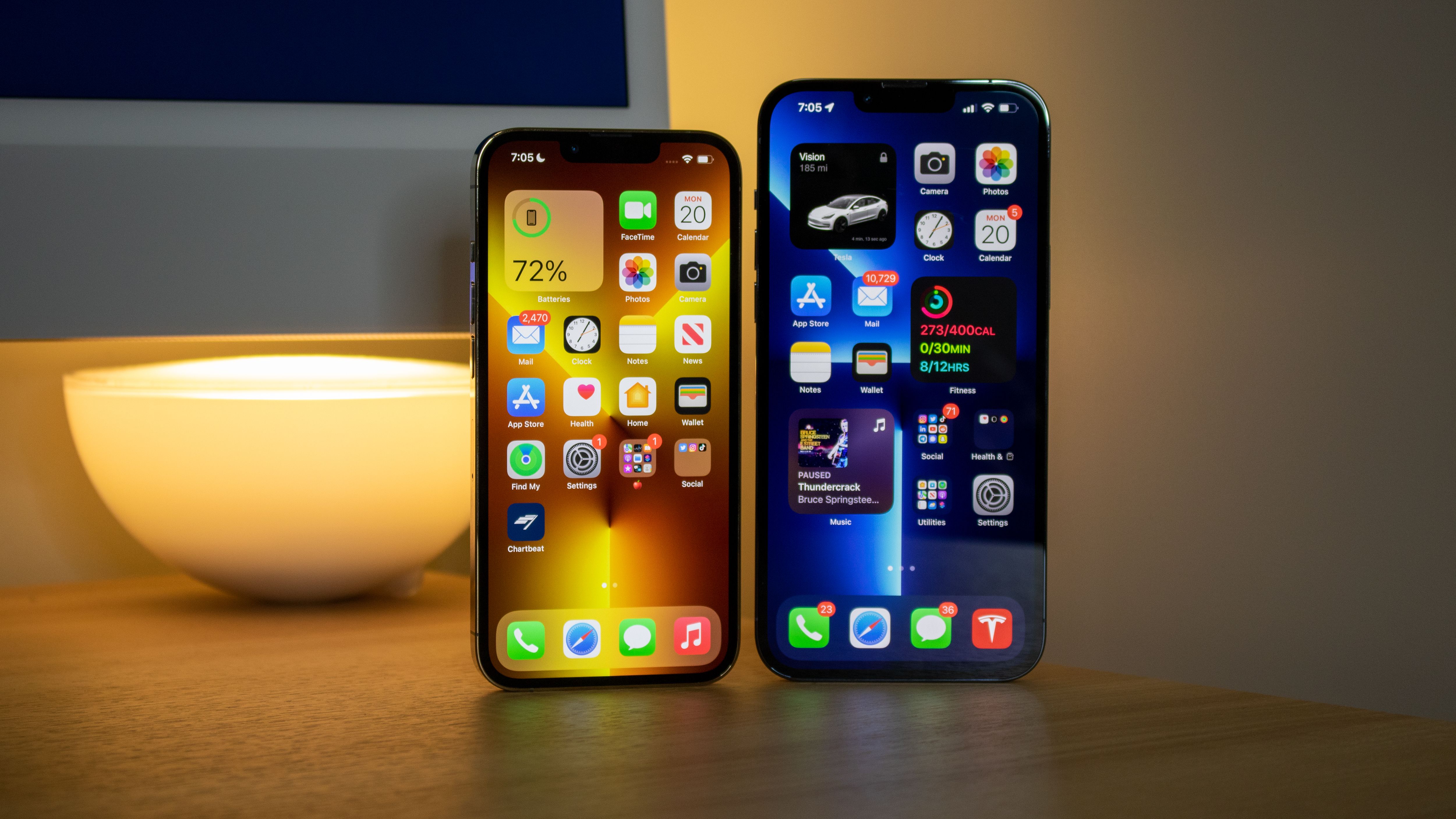Alongside the basic and Mini models, Apple has two new Pro edition iPhones: the 13 Pro and 13 Pro Max. Keeping in line with the iPhone 13 and 13 Mini, these two models bring some much-welcomed upgrades — but nothing quite mold-shattering.
Related: The iPhone 13 and 13 Mini reviewed.
After five days with both the iPhone 13 Pro and Pro Max, let’s unpack and see if these are truly Pro-grade devices.
The who, what and how
Who this is for: The iPhone 13 Pro and 13 Pro Max are for those who want the best camera possible packaged in the highest-end iPhone. Notably, it features a trio of lenses that are some of the most versatile we’ve ever tested, so we see photographers, influencers and videographers getting the most out of this.
What you need to know: Apple level-set the features across both of these Pro models. All is the same except for battery size and screen size. The 13 Pro and 13 Pro Max both get a triple-camera system with a LiDAR Sensor, Super Retina XDR displays with a 120Hz refresh rate, an A15 Bionic with an extra GPU core and a gorgeous new Sierra Blue color. There’s also no price increase from the 12 Pro or 12 Pro Max.
How this compares: The iPhone 13 Pro and 13 Pro Max are some of the best flagship smartphones on the market. The cameras can easily roll with the likes of a Samsung Galaxy S21, Z Fold 3 or even Pixel 5a and deliver more color-accurate and realistic images. We’d hedge that this is the first phone to also make macro photography a real feature, which other phones have struggled with. It’s also finally in line with the refresh rate of other flagship phone displays. If you just want an iPhone but don’t need the addition of a third lens or better low-light capabilities, the standard 13 is likely a better bet.
A trio of versatile lenses with a superpower

The aspect that sets the iPhone 13 Pro and Pro Max apart from other phones — even the 13 and 13 Mini — is the phone’s cameras. And by just reading the megapixels, you might think they’re identical. You still get a 12-megapixel wide, 12-megapixel ultrawide and 12-megapixel telephoto camera, but they feature upgraded sensors and modes.
Let’s start with the 12-megapixel wide camera, which features a massive sensor that makes itself a really dependable shooter in a variety of situations. The physically larger sensor allows more light to be captured, which in turn creates a more detailed image.
That’s paired with a 12-megapixel ultrawide lens that is set in a 120-degree field of view. Unlike on other devices with ultrawide, you won’t see weird blurs in the corners or an overtly fish-eye effect. Like the main lens, this features a larger sensor, which aids in reducing grain, blurriness and unpleasantness in the shot. What’s not gone is a lens flare, but it is reduced.
The trick here is that the ultrawide doubles as a macro lens, which is probably the most exciting aspect of this camera. Rather than toss a 2-megapixel dedicated macro camera like we’ve seen other phone makers do, Apple is using that same lens and quickly changes the focus when you’re close to a subject — a technique called Phase Detection Autofocus. The result is an image with a wild amount of detail and almost no fuzz or noise. It also works across video, allowing you to capture macro content in standard, time lapse and slow-mo. We did have some issues getting macro to work in video, as we’d get close to an object but it would not focus. The fix was lowering the recording quality, as macro doesn’t work on the highest recording setting.
Apple’s macro mode also doesn’t require heavy lifting to use it; you just simply get closer to an object and it intelligently switches into the proper shooting mode. It’s macro done the right way and a core reason why these lenses are so versatile.
Lastly, there’s a 12-megapixel telephoto lens that lets you zoom in 3x optically without causing distortion, noise or grain. This is the most Apple has ever offered in an iPhone — up from 2.5x on 12 Pro Max or 2x on the 12 Pro. It still lags behind the likes of Samsung, which offers Space Zoom (a mix of optical and digital) up to 100x.
The framing with this lens is a bit tighter than the wide or ultrawide, which makes it ideal for portraits or objects. We found results to be clear and color-accurate regardless of lighting, with no blurriness introduced. Moving into digital zoom or rather past 3x does add noise into the shot, though.
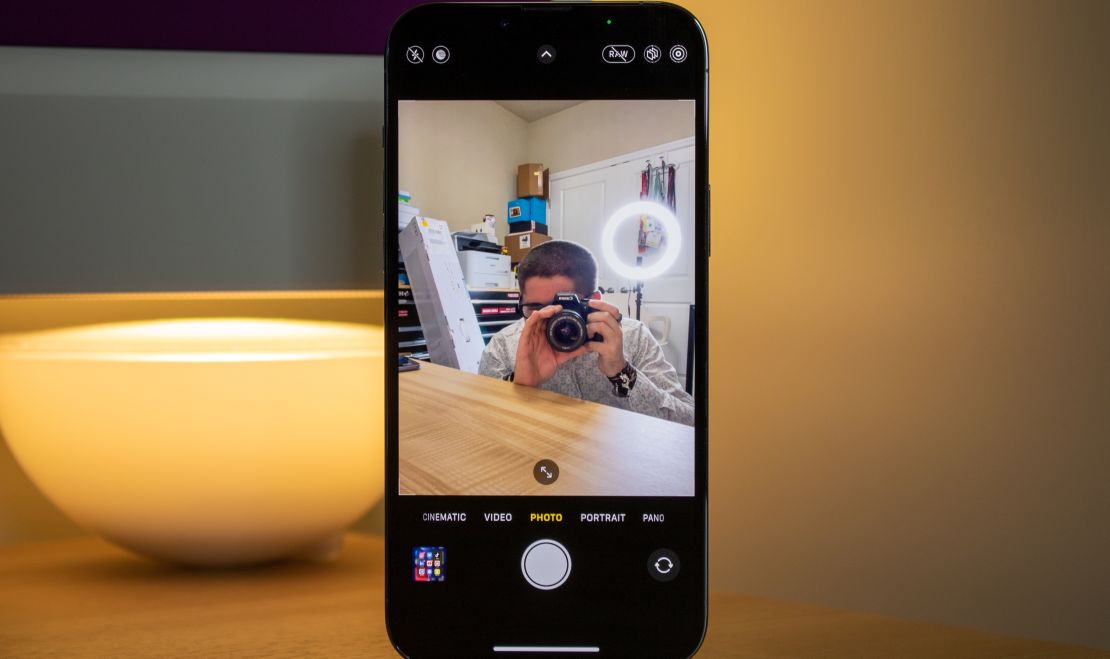
Portrait mode and Night mode are both core modes on the 13 Pro and 13 Pro Max, and both are aided thanks to the larger sensors and apertures in the hardware. It lets both of those modes capture more details, and with Portrait mode reduces the frequency of the “needs more light” notification. Welcome improvements, but it’s not night and day with every shot captured in these moments, though we were able to get some dramatically better Night mode shots over the 12 Pro or 12 Pro Max.
New for 2021 is “Photographic Styles,” a way to customize your iPhone photography within a range of presets before hitting the shutter button. You can pick from standard, vibrant, rich contrast, warm and cool. Then you can make customizations to the tone and warmth.
The other change is a new Cinematic mode for video, which essentially adds in the ability for portrait video. So, if you’re filming a group of people, the main person speaking or engaging will be in focus, while everyone else is blurred. You can adjust the selection of who’s in focus on the fly or by editing after.
Finally an iPhone with a high refresh rate

What’s notable about a 120Hz refresh rate? How long it took Apple to adopt it, as phones from Samsung and other manufacturers have boasted the high refresh rate for a while now. But Apple did put a spin on it.
In this case, the 13 Pro’s 6.1-inch or the 13 Pro Max’s 6.8-inch displays can scale between 10Hz and 120Hz — a feature Apple calls ProMotion. It’s an adaptive refresh rate that we’ve seen on the Galaxy S21 and even the Galaxy Z Fold 3, but here it works to match the refresh rate to the speed of your finger. But the average user might not even notice the subtle difference.
Still, opening applications feels faster as the splash screen comes online, same with multitasking or swiping between apps or menus within a given app. The real concrete change is evident when taking in content — like an epic battle scene in a movie or a team scoring a point in a live sporting event — as it looks more realistic and removes stutters from action sequences. And this high refresh rate is the core change with the iPhone 13’s display, and was what we called out as the main missing piece with the 12 Pro and 12 Pro Max.
The 13 Pro and 13 Pro Max still feature an OLED display, which delivers deep blacks and vibrant color-accurate visuals, which add up to an immersive experience. New for 2021, though, is the screen’s ability to scale the brightness even higher — a ceiling that is 200 nits higher than the 13 or 13 Mini — which comes in handy for anyone who frequently uses their device in direct sunlight.
The other change is a smaller TrueDepth sensor at the top that effectively slims down the notch. It leaves you with more space on the left and right sides, which is where iOS displays pertinent status information — things like the time, wireless information and battery level. With iOS 15, you’ll also see if location, microphone or cameras were recently used.
A fast processor and long battery life
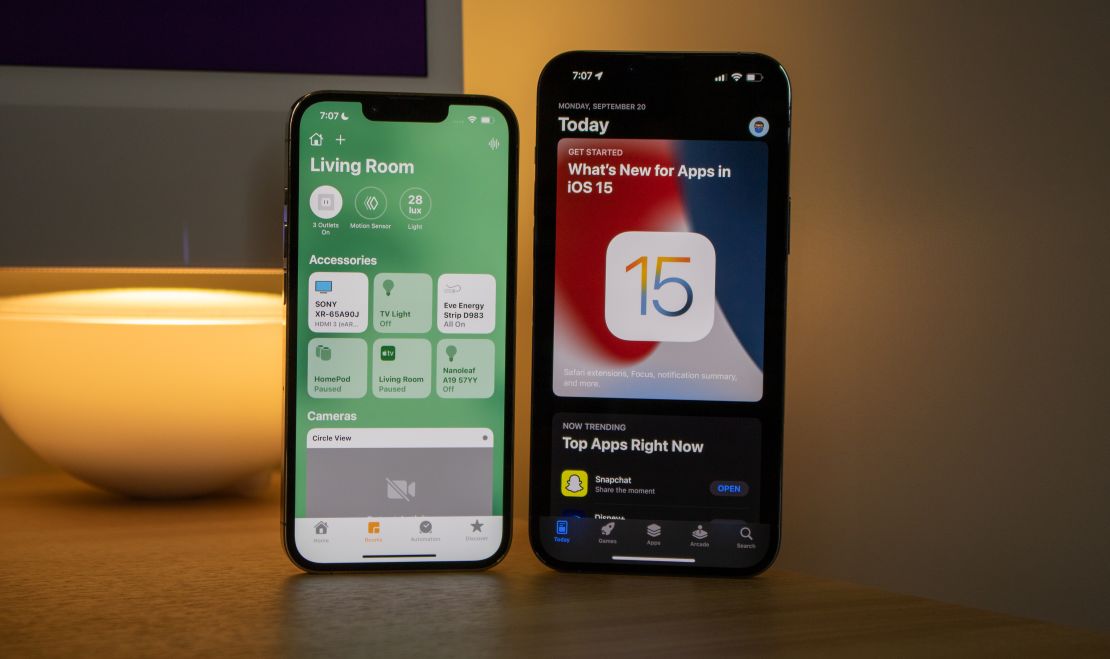
It was hard to make the 13 Pro or 13 Pro Max slow down during our testing. We could be switching Focus modes, have upward of 40 applications open in the background and do all this while a FaceTime call was running on top. We had no issues running applications like Slack, Trello, Facebook, Twitter, Instagram, TikTok, Outlook, Word, Photoshop Express, Pixelmator, Catalyst Black, RFS and all the preinstalled ones.
You just won’t see drastic improvements over the 12 Mini, 12, 12 Pro or 12 Pro Max — an image export might finish a second or two faster, and games will open up about three seconds faster for larger titles. They all feel very seamless, but the gains are more evident with an iPhone 11 or older, especially with intensive tasks.
One area with a more significant leap is with battery life. Prior to launch, the company promised that the 13 Pro would be an hour and a half longer than the 12 Pro, and the 13 Pro Max would last two and a half hours longer than the 12 Pro Max. In our real-world usage, we’ve gotten 16 hours of battery life.
We also ran the 13 Pro and 13 Pro Max through the CNN Underscored battery test. In it we play a 4K video on loop with the brightness set to 50% and volume at 30% with the device in airplane mode. We also ensure that Wi-Fi and Bluetooth are turned off and play the video on a loop until the device dies. We monitor the test with two cameras for redundancy. The iPhone 13 Pro lasted for 14 hours flat, which is longer than the 12 Pro’s 12 hours and 10 minutes of battery life. The iPhone 13 Pro Max lasted for 18 hours, which is two hours longer than the iPhone 12 Pro Max. You will not have an issue with either of these in terms of battery power.
Both devices can be charged via a Lightning cable or wirelessly through MagSafe or the Qi standard.
A similar build in a new shade of blue
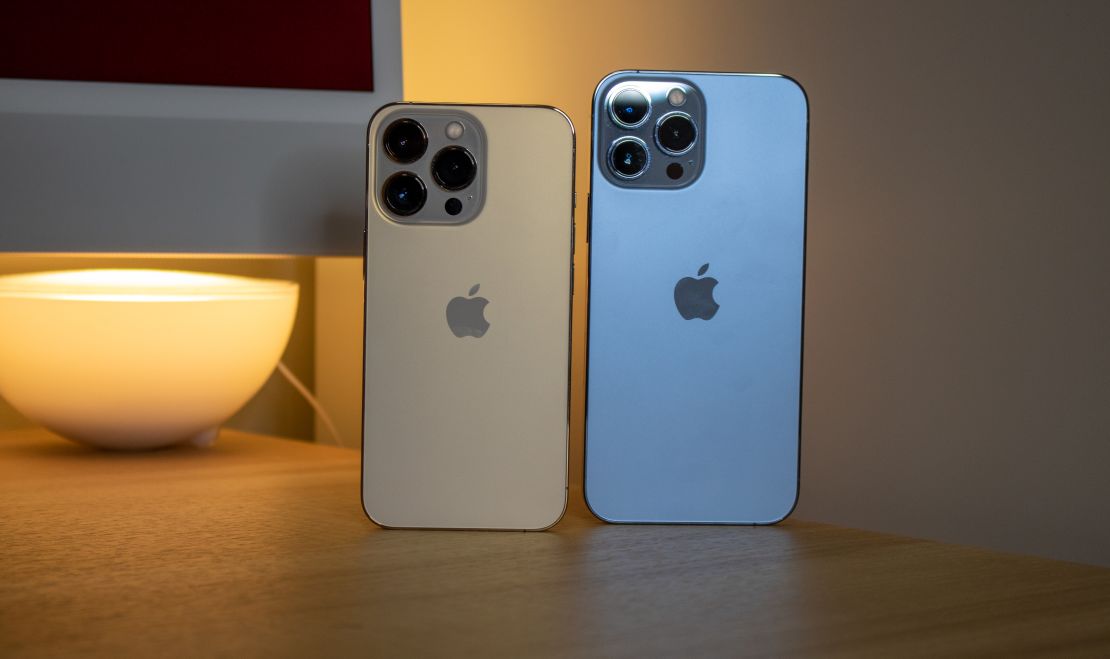
We wouldn’t blame you for mistaking an iPhone 13 Pro for a 12 Pro, as aside from the cameras on the back, they’re nearly identical.
The 13 Pro and Pro Max feature a modern flat build that makes the device very easy to grab or hold on to. The buttons are all slightly lower, which in the case of the Pro Max makes it easier for people with smaller hands to locate.
The left side is home to the sound silencer switch, volume up, volume down and a SIM card slot at the bottom. Your power button lives slightly lower on the right side, along with a mmWave band antenna. The edging here is a bit higher end than the aluminum on the 13, as it’s stainless steel, which merges with the display on the front and frosted glass finish on the back. As expected, the bottom contains a Lightning port flanked on either side by speakers.
New for 2021 are four colors: Sierra Blue, graphite, gold and silver. And regardless of color, the iPhone 13 Pro or 13 Pro Max is IP68 rated for submersion in up to 1 meter of water for 30 minutes. It can also handle spills, be it coffee, tea, water, Gatorade or beer.
We will note that the 13 Pro is the same size as the 13, but since the camera module is larger on the back you will need to get cases designed specifically for the device.
Let’s talk about 5G … again
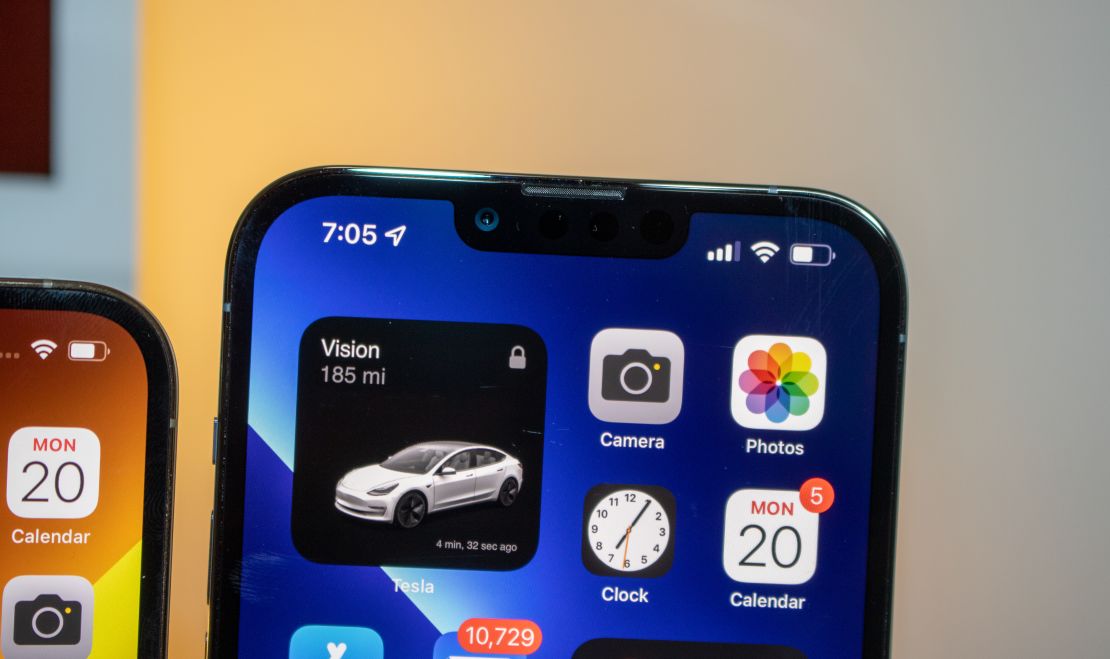
For the second year in a row the iPhone features 5G and both of the “Pro” models, like the non-Pro ones, feature the two core standards in the United States: Sub-6 and mmWave. And like we said last year, 5G — at least the one we all want — is pretty hard to find. And that goes for most carriers (AT&T, T-Mobile and Verizon included).
So let’s break down the types of 5G you’ll see on the 13 Pro or 13 Pro Max. 5G in the top right corner means you’re connected to a likely nationwide Sub-6 network from a carrier. This is standard 5G in a low-band capacity, which is easier to roll out. But it also doesn’t deliver on the wild speeds we’ve been promised. Speeds will be in line with 4G LTE at 200 to 300 Mbps, but the affordance is more bandwidth on a given network.
5G UW is likely the 5G you want, but it can be trickier to find. It’s the ultrawide-band mmWave 5G that delivers super-fast speeds, but you need to be in direct line of sight with a cell tower — at least, that’s what we needed in testing this year and with the iPhone 12 Pro last year. It’s a harder network to roll out, and no carrier offers it truly everywhere. In our testing, a building blocking the phone to the tower or walking further down the street resulted in the connection being dropped.
That is to say, there’s a good chance you might not be in an area with the 5G you’re really craving. It’s good that Apple is including it in the iPhone 13 Pro and the 13 Pro Max, but it’s not something that you’ll likely see come in handy daily. It’s really an act of future-proofing.
Bottom line
If you’re into photography or videography — or even if you’re a social media star — there’s a case to be made for opting for a 13 Pro or a 13 Pro Max. Its trio of lenses is one of the most versatile we’ve tested. That’s paired with a buttery smooth and vibrant display, class-leading performance and seriously long battery life.
But if you have an iPhone 12 Pro or 12 Pro Max and aren’t craving the upgraded cameras, we’d recommend holding out. A 120Hz display is great, but it comes at a significant cost.
However, if you have an iPhone 11 Pro or 11 Pro Max (or older), now is a really good time to make the jump.
